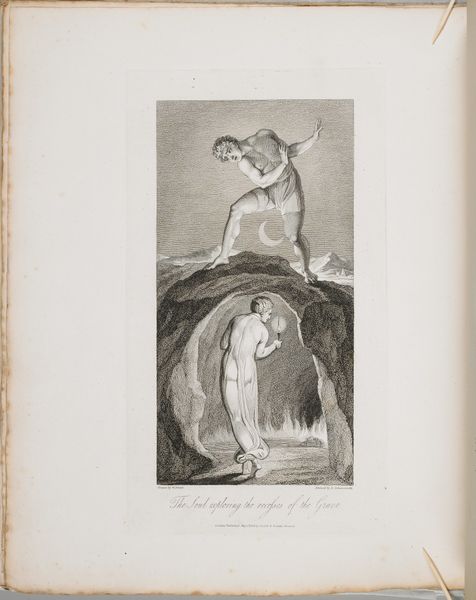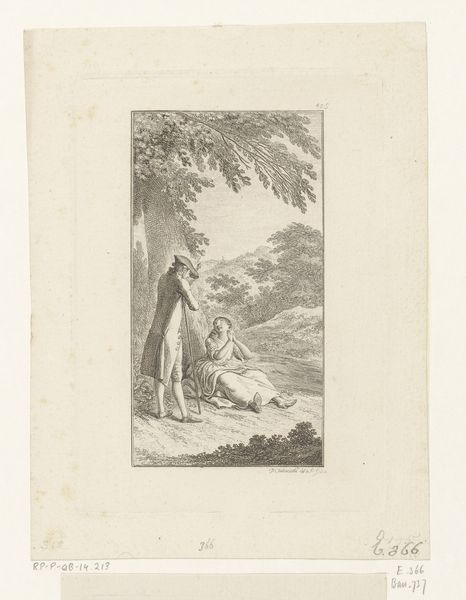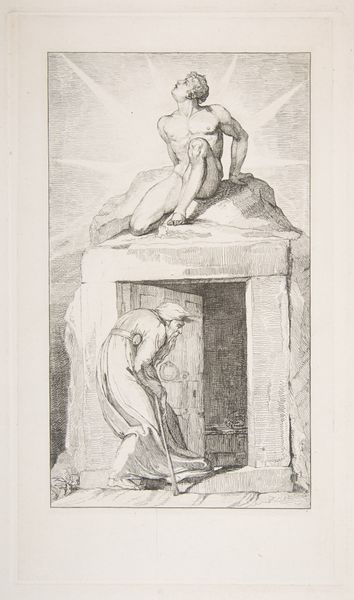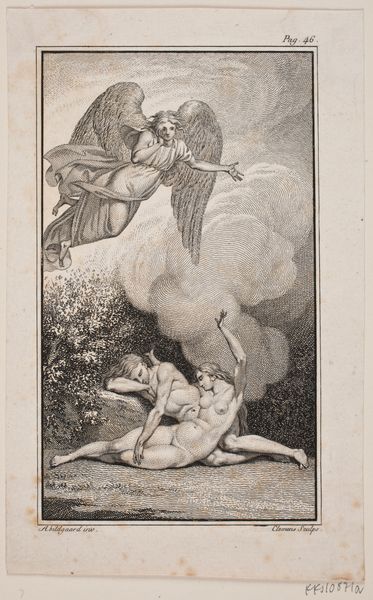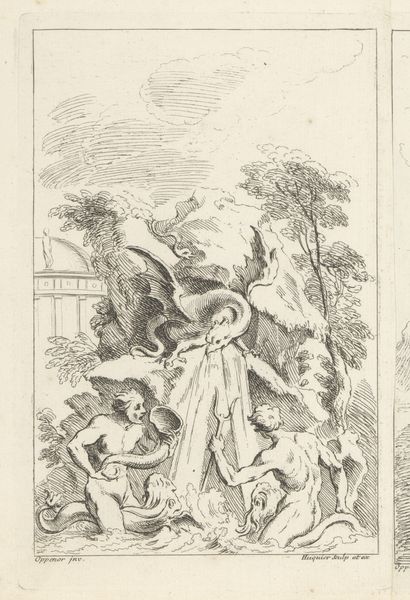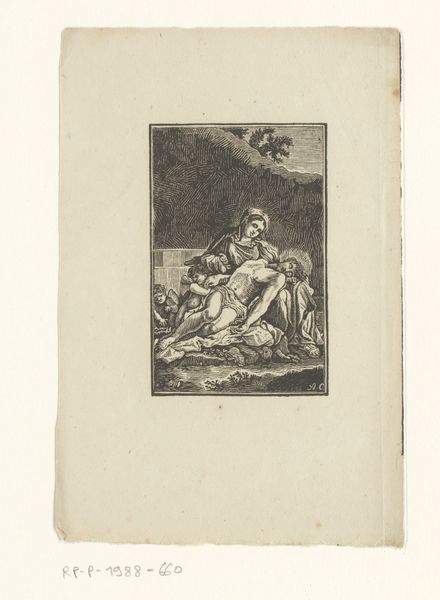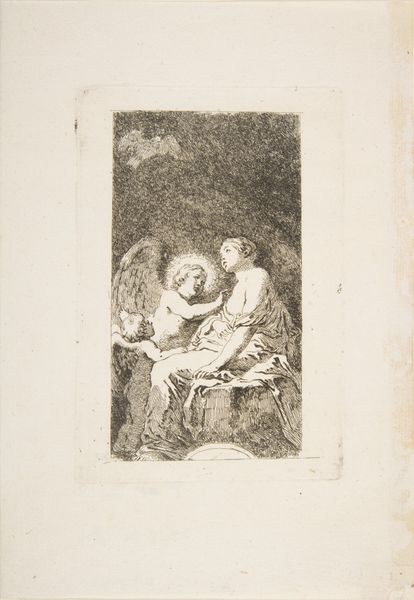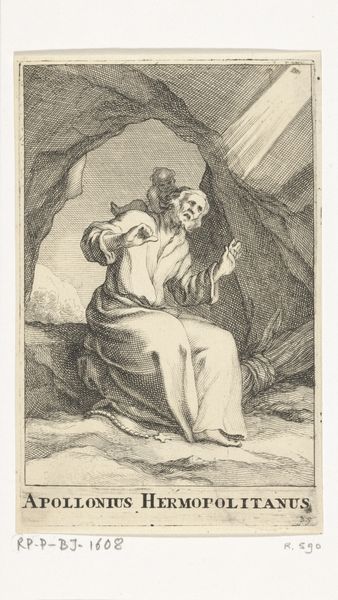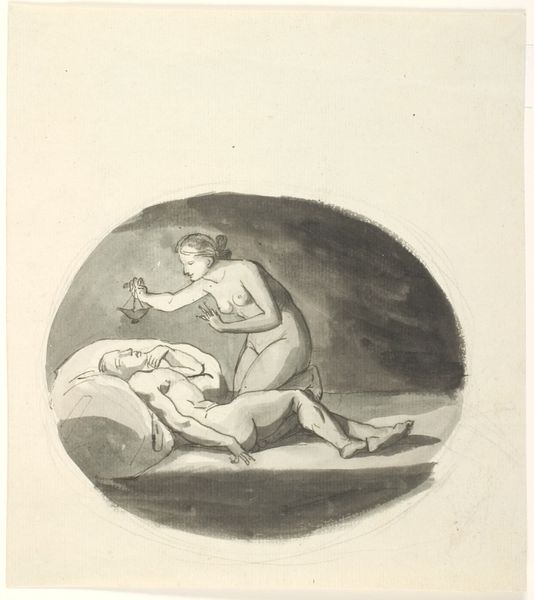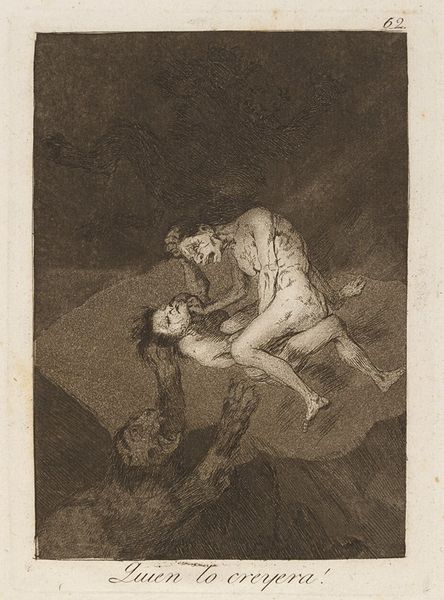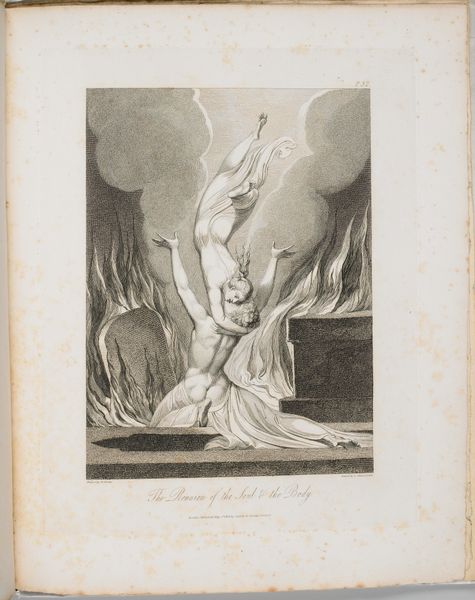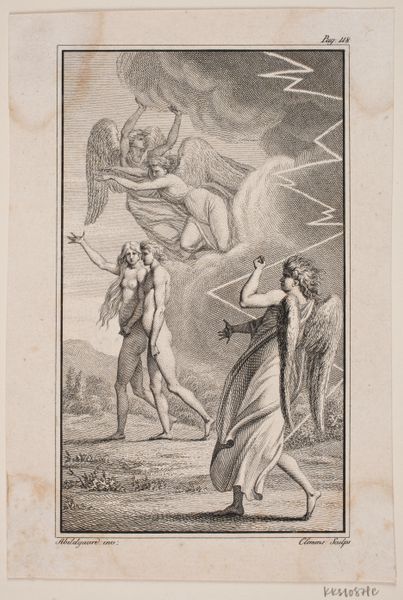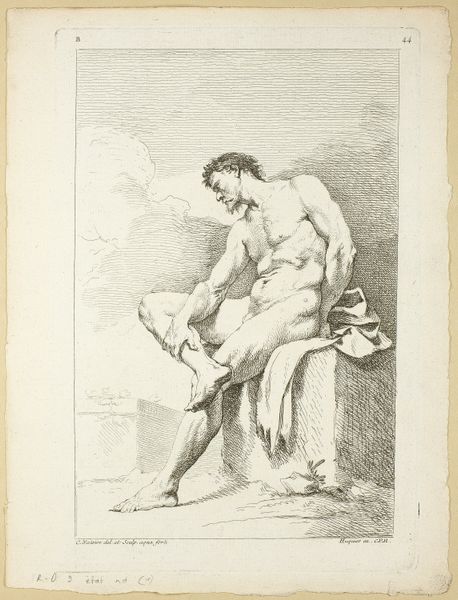
The Soul Exploring the Recesses of the Grave, from "The Grave," a Poem by Robert Blair 1813
0:00
0:00
drawing, print, engraving
#
pencil drawn
#
drawing
# print
#
figuration
#
pencil drawing
#
romanticism
#
men
#
line
#
history-painting
#
nude
#
engraving
Dimensions: plate: 9 1/4 x 4 11/16 in. (23.5 x 11.9 cm) sheet: 11 x 6 3/16 in. (27.9 x 15.7 cm)
Copyright: Public Domain
Editor: This is William Blake's "The Soul Exploring the Recesses of the Grave," an engraving from 1813. The figures are stark and dramatic against the barren landscape. It's quite theatrical. How do you interpret this work? Curator: This engraving visualizes Robert Blair's poem, "The Grave," and delves into the intersection of death, spirituality, and the body in ways that challenge Enlightenment ideals. Blake, a radical of his time, critiqued the power structures embedded within institutions and societal norms. What strikes me is the active "soul" exploring, disrupting passive views of death. Editor: So it's less about the stillness of death and more about…a journey? Curator: Precisely. The soul, often depicted as nude, a symbol of vulnerability and honesty, actively engages with the unknown. Consider the political climate – the Napoleonic Wars, social upheaval. Blake uses symbolism, like the grave itself, as a metaphor for the oppressive structures holding back spiritual and social progress. Where does the visual contrast between the figure on the cliff and the one entering the grave lead your thoughts? Editor: The figure above seems afraid, while the other is moving forward, despite being in a dark, scary place. Maybe it's about confronting fear to find something new. Curator: Exactly. And thinking intersectionally, how might concepts of gender, class, or even ability influence one's reading of vulnerability or freedom? Blake wasn’t just making pretty pictures, but compelling arguments for spiritual and social change. Editor: I hadn't considered the political aspect so explicitly. Curator: Art is always intertwined with its context. Seeing it through that lens opens up so many possibilities. Editor: I'll definitely look at Blake's other works differently now. Thanks! Curator: My pleasure! This kind of exploration reminds us that art is always in dialogue with its time, inviting us to engage in critical reflection.
Comments
No comments
Be the first to comment and join the conversation on the ultimate creative platform.
